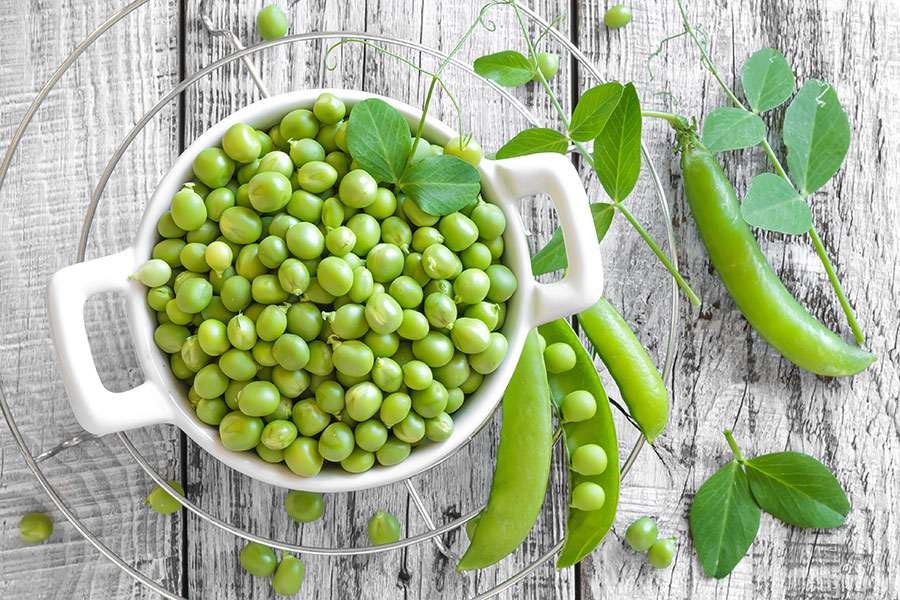Why and How to Serve These Seasonal Stars
Red – the color of fire and blood – is associated with energy, strength and power. Though not flavors, those qualities can be represented in foods and dishes.
Cranberries, pomegranates and radishes share not only their color but sharp tangy flavors and abundant nutrition. This trio of produce can be found in cooler months at your local grocer. Below we discuss why and how to shift these powerhouses from the sideline to the spotlight this season.
Cranberries

Lowbush vines produce ruby red tangy low-calorie cranberries. These potent puckers are full of antioxidants like Vitamin C, which boosts immunity and protects cells from free radical damage and inflammation.

Cranberries’ high content of phytochemicals (e.g. anthocyanidins, phenolic acids, flavonoids) enable them to protect against urinary tract infections.1 They also provide heart protection by favorably changing lipid profile.1 Cranberries also offer fiber for digestion, regularity and weight maintenance.

A half-cup of raw cranberries (50 gm) provides 23 calories, 1.8 gm fiber (7% DRI), 7 mg Vitamin C (10% RDA), 0.6 µg Vitamin K (6% RDA), 0.7 mg Vitamin E (4% RDA), 0.13 mg Manganese (7% AI), and 28 µg Copper (3% RDA).*

Add whole to baked goods, salads, chocolate and desserts for a tart punch. Use sweetened dried cranberries in energy bars/balls, granola, and yogurt parfaits. Cooked cranberries are perfect on poultry, and with soft cheese and caramelized onion on crostini. For less sourness (and nutritional impact) you can drink sweetened 27% cranberry juice cocktail, though it has reduced polyphenols2 and lacks fiber.
Pomegranate

The vivid red pomegranate fruit is full of polyphenols including anthocyanins and elligitannins to fight free radicals and protect cells. Based on their nutrient composition, whole pomegranates and packaged pomegranate arils are both Heart-Check Certified foods by the American Heart Association.3 Their potassium helps keep blood pressure down. The folate in pomegranate helps make DNA and red blood cells.

A half-cup of pomegranate arils (87 gm) provides 72 calories, 3.5 gm fiber (14% DRI), 9 mg Vitamin C (12% RDA), 33 µg Folate (8% RDA), 0.5 mg Vitamin E (3% RDA), 0.1 mg Manganese (5% AI), 205 mg Potassium (4% AI), 10 mg Magnesium (3% RDA), 0.3 mg Zinc (3% RDA), and 0.3 mg Iron (3% RDA).*

To properly cut and de-seed a pomegranate cut off the crown, score and divide into quarters, then in a large bowl of water, remove skin and membranes; finally, drain seeds in a colander.4 By themselves, pomegranate arils make a great snack. They’re great toppings for everything from avocado pesto to chia seed pudding.

Mix them into black bean salsa, couscous, grain bowls, chocolate bark or blend in to smoothies. Without the seeds, pomegranate juice is concentrated in phytochemicals, but is also sugar-rich. It can be reduced down to a syrup and drizzled on meats as a marinade or sauce.
Radishes

The humble spicy radish is a root vegetable (related to rutabaga & turnip in the same Brassica family) whose leaves are also edible. We generally think of the common red/white radish, but the white daikon radish and green/pink watermelon radish are also notable for their peppery crunch.

Such low-calorie radishes are a good source of Vitamin C, and provide some folate, potassium and fiber. Their phytochemicals include flavonoids, anthocyanins and cancer-fighting compounds called indoles5 and sulforaphanes. A diet high in brassica vegetables may also protect against cardiovascular disease.6

A half-cup of sliced radish (58 gm) provides 9 calories, 1 gm fiber (4% DRI), 9 mg Vitamin C (12% RDA), 15 µg Folate (4% RDA) and 135 mg Potassium (3% AI).*
Detach tops (can be used in soups or salads), wash then wrap roots in a paper towel, bag and place in refrigerator’s crisper drawer to last a week. Radish can be eaten raw, often found atop salads.

Try radish in slaw with fennel, apple or cucumber, parmesan & vinaigrette; it also makes good salsa and chutneys. Garnish tacos, salmon & cucumber rolls and egg avocado toast with shaved radish for a crisp zing. You can also sauté or braise radish to mellow the bite and serve alongside fish, poultry or beef.
* based on USDA’s FoodData Central and the National Institute of Health’s Nutrient Recommendations: Dietary Reference Intakes (DRI) for Recommended Dietary Allowance (RDA) and Adequate Intake (AI)
references
-
Blumberg JB, Camesano TA, Cassidy A, et al. Cranberries and Their Bioactive Constituents in Human Health. Advances in Nutrition. 2013;4(6):618–632. Published 2013 Nov 6. doi:10.3945/an.113.004473
-
Grace MH, Massey AR, et al. Comparison of Health‐Relevant Flavonoids in Commonly Consumed Cranberry Products. Journal of Food Science. August 2012; 77(8): H176-H1-83. https://doi.org/10.1111/j.1750-3841.2012.02788.x
-
“Heart-Check Foods.” American Heart Association https://www.heart.org/en/healthy-living/healthy-eating/heart-check-foods Accessed 10.15.2019
-
Saad Fayed. “How to De-Seed a Pomegranate.” The Spruce Eats. https://www.thespruceeats.com/how-to-de-seed-a-pomegranate-2356071 05/4/2019. Accessed 10.15.2019
-
Michelle Kerns. “The Nutrients in Radishes.” Healthy Eating, SF Gate. https://healthyeating.sfgate.com/nutrients-radishes-4369.html Accessed 10.16.2019
-
Catharine Paddock. “These Vegetables May Promote Artery Health.” Medical News Today. https://www.medicalnewstoday.com/articles/321409.php July 18, 2018. Accessed 10.16.2019










As a Newbie, I am continuously browsing online for articles that can benefit me. Thank you!
I truly appreciate this post. I have been looking all over for this! Thank goodness I found it on Bing. You’ve made my day! Thx again!
Keep up the good work, thanks!